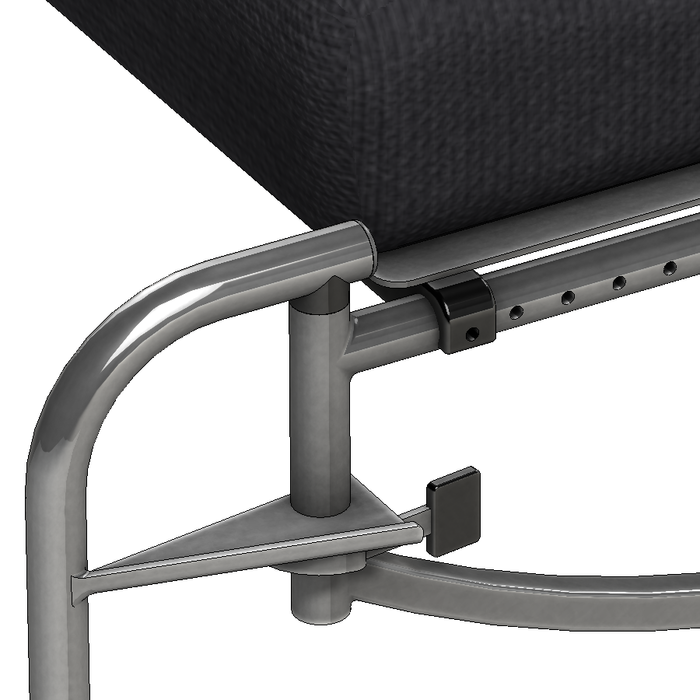Attaching to Wheelchairs with Bolt Holes Along the Seat Rail
This page will walk you through how to mount to a wheelchair, that has at least two available holes for our hardware to bolt securely to.
We try to avoid attaching to parts of the wheelchair that are designed to be removable:
ie. removable footrests or armrests.
Throughout this page, we will deal with installing and mounting either the Adapter Plate (WC-AP), Adapter Plate 2 (WC-AP2) or Adapter Plate 4 (WC-AP4).
Examples of Wheelchairs with Bolt Holes Along the Seat Rail
Here are some examples of wheelchairs with holes within the seat frame that we can bolt to.
There are obviously other applications where we could use a "bolt spacing" to secure a Mount'n Mover.
Adapter Plates, Hole Sizes and Bolt Spacing
Adapter Plate(s) hole sizes
- You will find the the teal holes fit either 5/16" or 8 mm bolts.
In the AP and AP2, these holes are at a fixed width. The AP4 allows you to have varying hole spacing for this size bolt.
Use these when mounting to a wheelchair with 5/16" or 8mm holes. - The green holes are for 1/4" or 6mm bolts.
All these plates accommodate a range of bolt spacing with one bolt in a hole, and the other within a slot.
Use these when mounting to a wheelchair with 1/4" or 6mm holes. - The orange holes are threaded specifically for use with Mount'n Mover hardware. These holes are threaded for 1/4"-28 UNF screws only. Avoid using 1/4-20" screws from other sources or those supplied with our WC-Tnut.
Attach an Adapter Plate, L-Angle Extension or Wheelchair Bracket using 2 adjacent threaded holes.
Optimum bolt spacing/securement
When attaching to a wheelchair using two bolts, typically the strongest way to mount is to have the bolts secured as far apart as possible (to broaden the base of support).
Ideally you would have a hole for each bolt - but if that is not an option, use a hole and a slot.
Screwing down two bolts within the same slot increases your chances of mounting slop.
To recap, preference for mounting (bolt as far apart as possible):
- Bolt using two holes
- Bolt using one hole and a slot
- Mounting two bolts within the same slot.
Adapter plate(s) orientations
Each adapter plate is extremely versatile. Below are just some examples of how these plates can be oriented to best attach to your wheelchair.
Adapting a Daessy Clamp
Sometimes it is easier to simply adapt to existing hardware than coming up with a whole new solution.
In this case, we demonstrate how to bolt onto an existing Daessy clamp.
Since the person already owns the Daessy clamp and it is already attached, we can bolt directly to the Daessy clamp.
In this example, we use a Wheelchair Adapter Plate (WC-AP).
"Sandwiching" Components for Adapter Plates
In many cases, the best mounting point may already be occupied with tie-downs, thigh/side supports, etc.
Fortunately, our adapter plates are versatile enough to "sandwich" between the frame and the additional component!
For more details, see Mounting to frames by sandwiching components.

